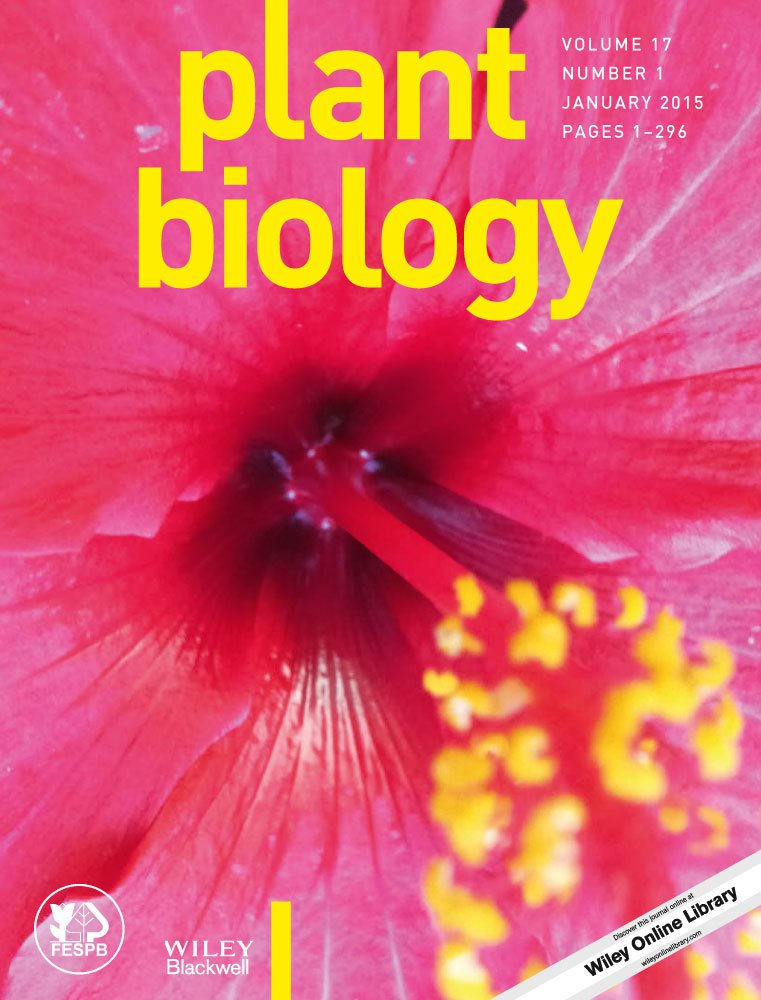Ver ítem
- xmlui.general.dspace_homeCentros e Institutos de InvestigaciónCIAP. Centro de Investigaciones AgropecuariasInstituto de Fisiología y Recursos Genéticos VegetalesArtículos científicosxmlui.ArtifactBrowser.ItemViewer.trail
- Inicio
- Centros e Institutos de Investigación
- CIAP. Centro de Investigaciones Agropecuarias
- Instituto de Fisiología y Recursos Genéticos Vegetales
- Artículos científicos
- Ver ítem
Plasticity in sunflower leaf and cell growth under high salinity
Resumen
A group of sunflower lines that exhibit a range of leaf Na+ concentrations under high salinity was used to explore whether the responses to the osmotic and ionic components of salinity can be distinguished in leaf expansion kinetics analysis. It was expected that at the initial stages of the salt treatment, leaf expansion kinetics changes would be dominated by responses to the osmotic component of salinity, and that later on, ion inclusion would impose
[ver mas...]
A group of sunflower lines that exhibit a range of leaf Na+ concentrations under high salinity was used to explore whether the responses to the osmotic and ionic components of salinity can be distinguished in leaf expansion kinetics analysis. It was expected that at the initial stages of the salt treatment, leaf expansion kinetics changes would be dominated by responses to the osmotic component of salinity, and that later on, ion inclusion would impose further kinetics changes. It was also expected that differential leaf Na+ accumulation would be reflected in specific changes in cell division and expansion rates. Plants of four sunflower lines were gradually treated with a relatively high (130 mm NaCl) salt treatment. Leaf expansion kinetics curves were compared in leaves that were formed before, during and after the initiation of the salt treatment. Leaf areas were smaller in salt‐treated plants, but the analysis of growth curves did not reveal differences that could be attributed to differential Na+ accumulation, since similar changes in leaf expansion kinetics were observed in lines with different magnitudes of salt accumulation. Nevertheless, in a high leaf Na+‐including line, cell divisions were affected earlier, resulting in leaves with proportionally fewer cells than in a Na+‐excluding line. A distinct change in leaf epidermal pavement shape caused by salinity is reported for the first time. Mature pavement cells in leaves of control plants exhibited typical lobed, jigsaw‐puzzle shape, whereas in treated plants, they tended to retain closer‐to‐circular shapes and a lower number of lobes.
[Cerrar]

Autor
Céccoli, Gabriel;
Bustos, Dolores Angela;
Ortega, Leandro Ismael;
Senn, Eugenia;
Vegetti, Abelardo Carlos;
Taleisnik, Edith;
Fuente
Plant biology 17 (1) : 41-51. (January 2015)
Fecha
2015-01
Editorial
Wiley
ISSN
1435-8603
Formato
pdf
Tipo de documento
artículo
Palabras Claves
Derechos de acceso
Restringido
 Excepto donde se diga explicitamente, este item se publica bajo la siguiente descripción: Creative Commons Attribution-NonCommercial-ShareAlike 2.5 Unported (CC BY-NC-SA 2.5)
Excepto donde se diga explicitamente, este item se publica bajo la siguiente descripción: Creative Commons Attribution-NonCommercial-ShareAlike 2.5 Unported (CC BY-NC-SA 2.5)

